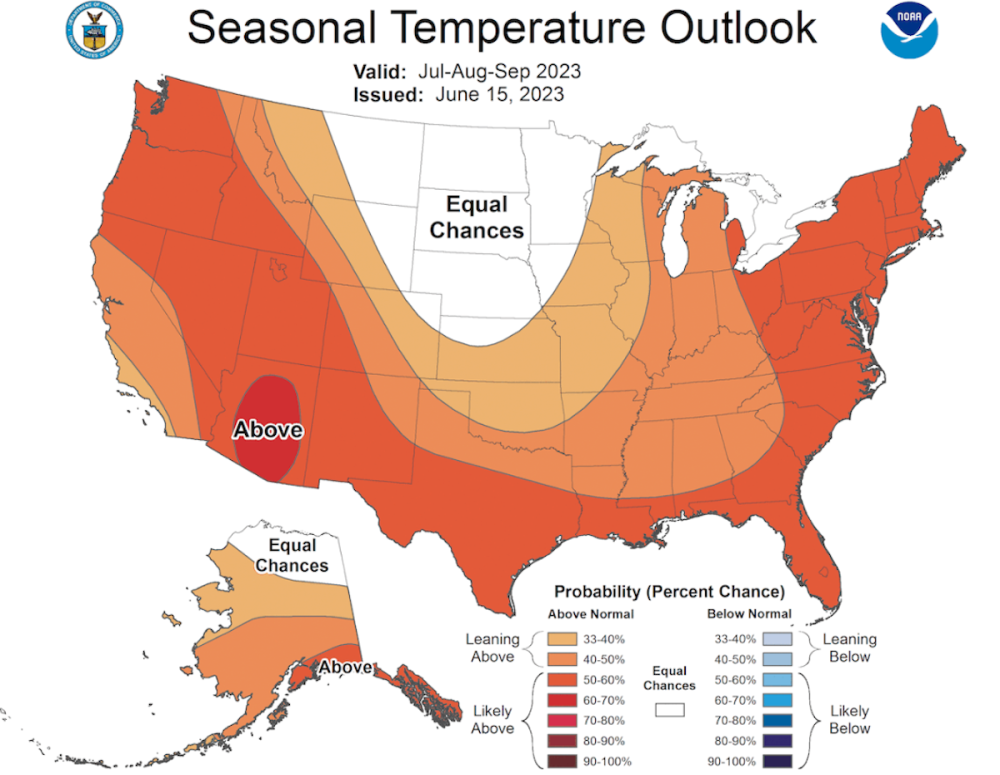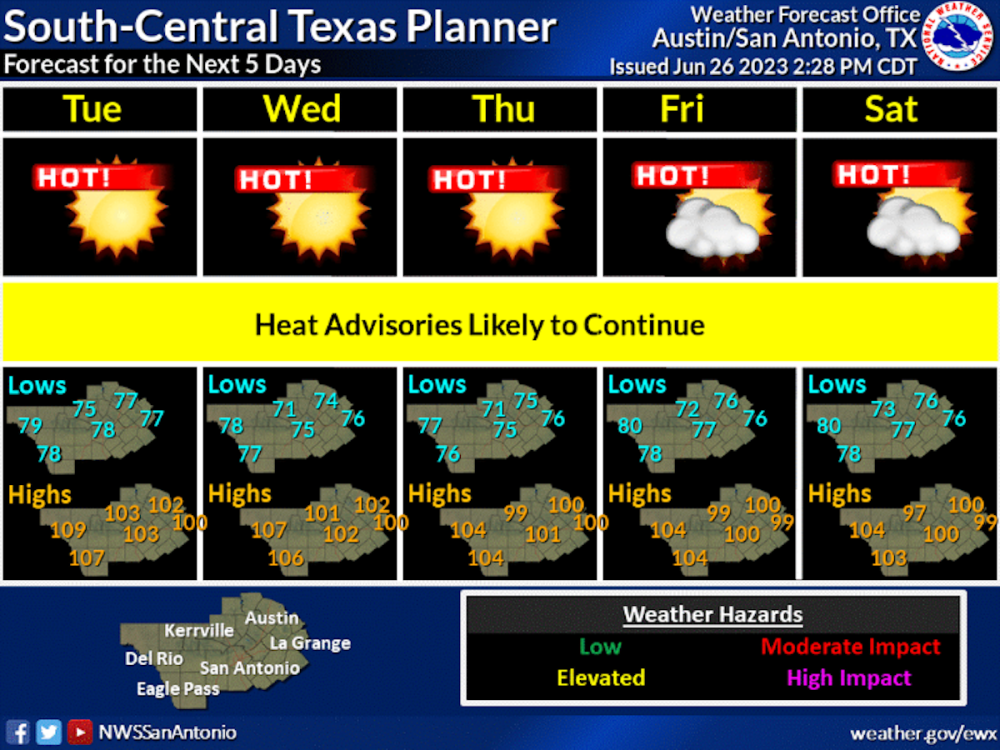The gist
In the wake of Austin breaking a record for its highest heat index value of 118 degrees on June 21, city officials began sharing tips for heat safety. At the same time, weather experts began sharing their predictions for the coming months headed into September. The consensus among them: It's going to be hot.

"Heat this intense, this early in the year, will create stressful conditions for millions of people," said Andrew Pershing, vice president for science at Climate Central.
Zooming out
Michelle L'Heureux, El Nino Southern Oscillation expert at the Climate Prediction Center for the National Oceanic and Atmospheric Administration, this high heat is unusual considering the area is now well into a period of El Nino.
"Historically, El Nino does not lead to above-average temperatures in Texas," L'Heureux said. "If anything, the presence of El Nino tends to tilt toward below-average temperatures for the April-June season."
Zooming in
Not only will it be hot, according to the National Weather Service, predictions also indicate heat advisories will be issued through at least June 30.

There are two main factors that contribute to the exceptional heat this early in the season, according to experts.
Those two contributing factors include:
- Climate change: The biggest factor is that climate change has made record heat in this Texas heat wave at least five times more likely, Pershing said.
- A Texas heat dome: Another reason for the extreme heat can be attributed to what experts call a heat dome that is persisting above Central Texas. A heat dome occurs when a region of high pressure traps heat over an area.
Looking ahead
NOAA Meteorologist John Moore said Texas is likely to see warmer-than-average temperatures well into September and offered a few tips to help spot the warning signs of heat-related illness—especially for those working outside. The following explanations can be attributed to the NOAA website.
- Heat cramps: Heat cramps may be the first sign of heat-related illness, and may lead to heat exhaustion or stroke.
- Symptoms: Painful muscle cramps and spasms usually in legs and abdomen, and heavy sweating
- First aid: Apply firm pressure on cramping muscles or gently massage to relieve spasms; give sips of water unless the person complains of nausea, then stop giving water; seek immediate medical attention if cramps last longer than one hour
- Heat Exhaustion
- Symptoms: Heavy sweating, weakness or tiredness, cool/pale/clammy skin, fast or weak pulse, muscle cramps, dizziness, nausea or vomiting
- First aid: Move person to a cooler environment, preferably a well air-conditioned room; loosen clothing; apply cool, wet cloths or have the person sit in a cool bath; offer sips of water; seek immediate medical attention if the person vomits, symptoms worsen, or it lasts longer than one hour
- Heat Stroke
- Symptoms: Throbbing headache, confusion, nausea, dizziness, body temperature above 103 degrees Fahrenheit, damp skin, rapid or strong pulse
- First aid: Call 911 or get the victim to a hospital immediately. Move the victim to a cooler, preferably air-conditioned room. Reduce body temperature with cool cloths or a bath. Use a fan if heat index temperatures are below the high 90s as a fan can make you hotter at higher temperatures. Do not give fluids.
Click here to learn where Austin cooling centers are located. For more information about what to do during extreme heat-related events, visit the Centers for Disease Control and Prevention website.





